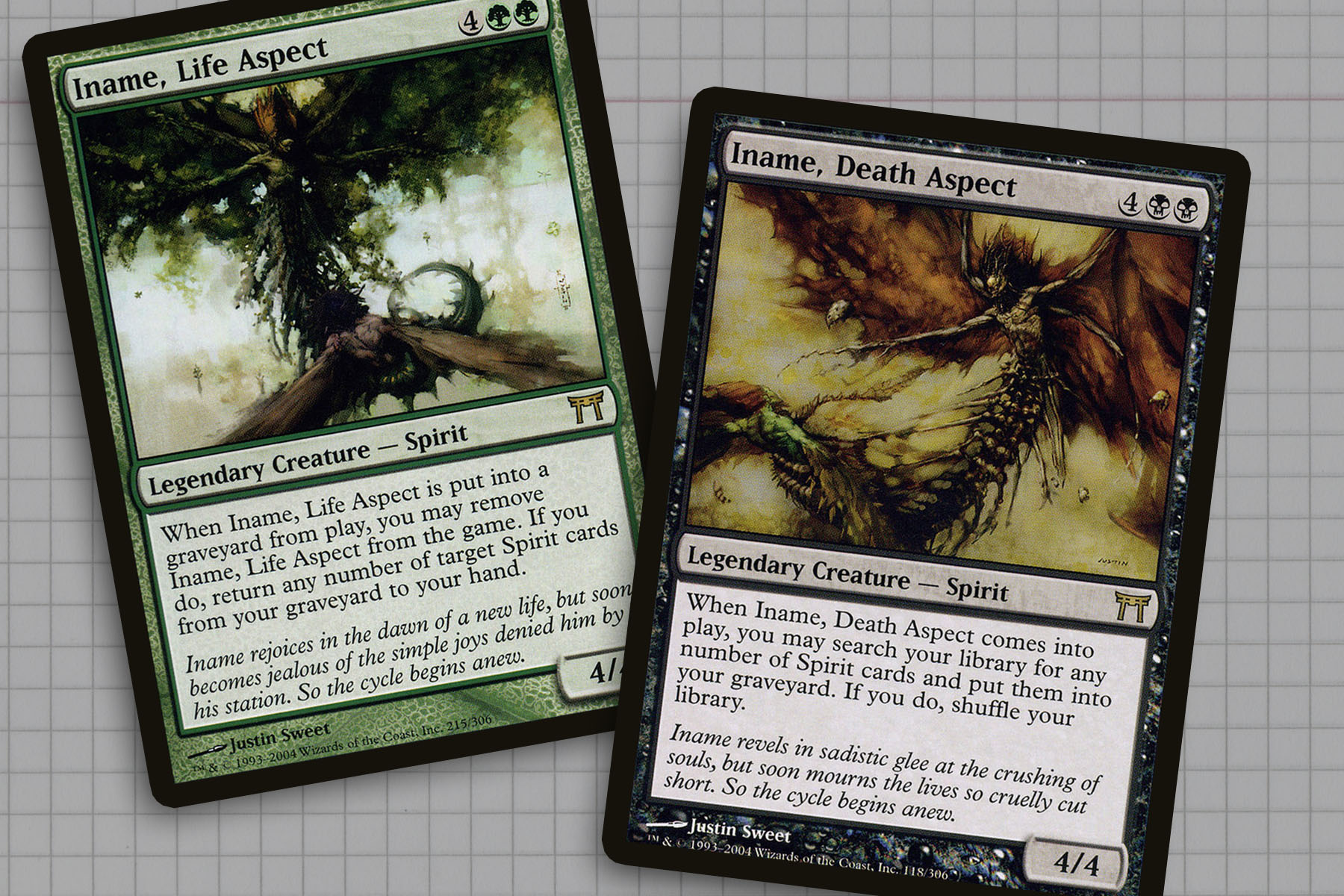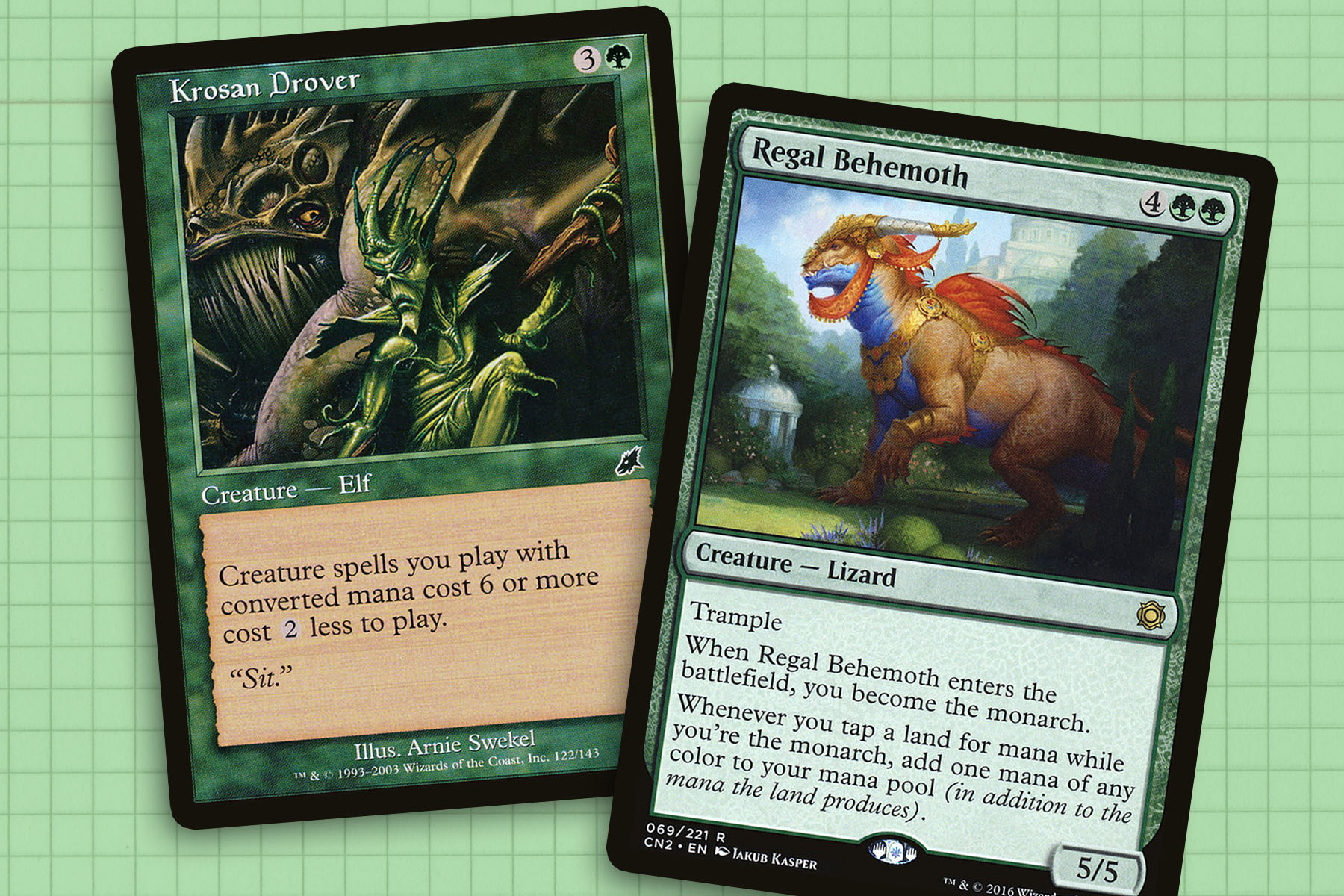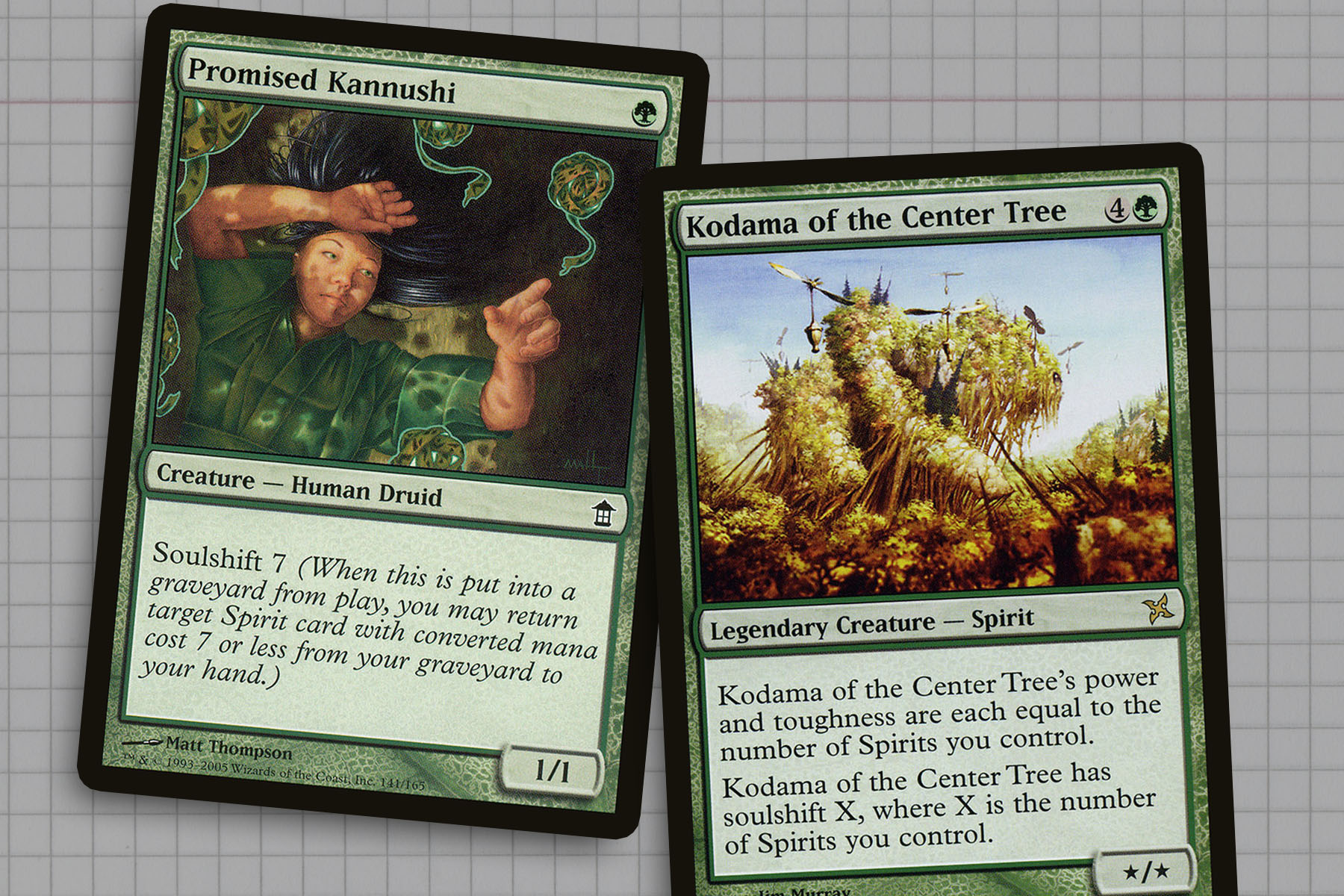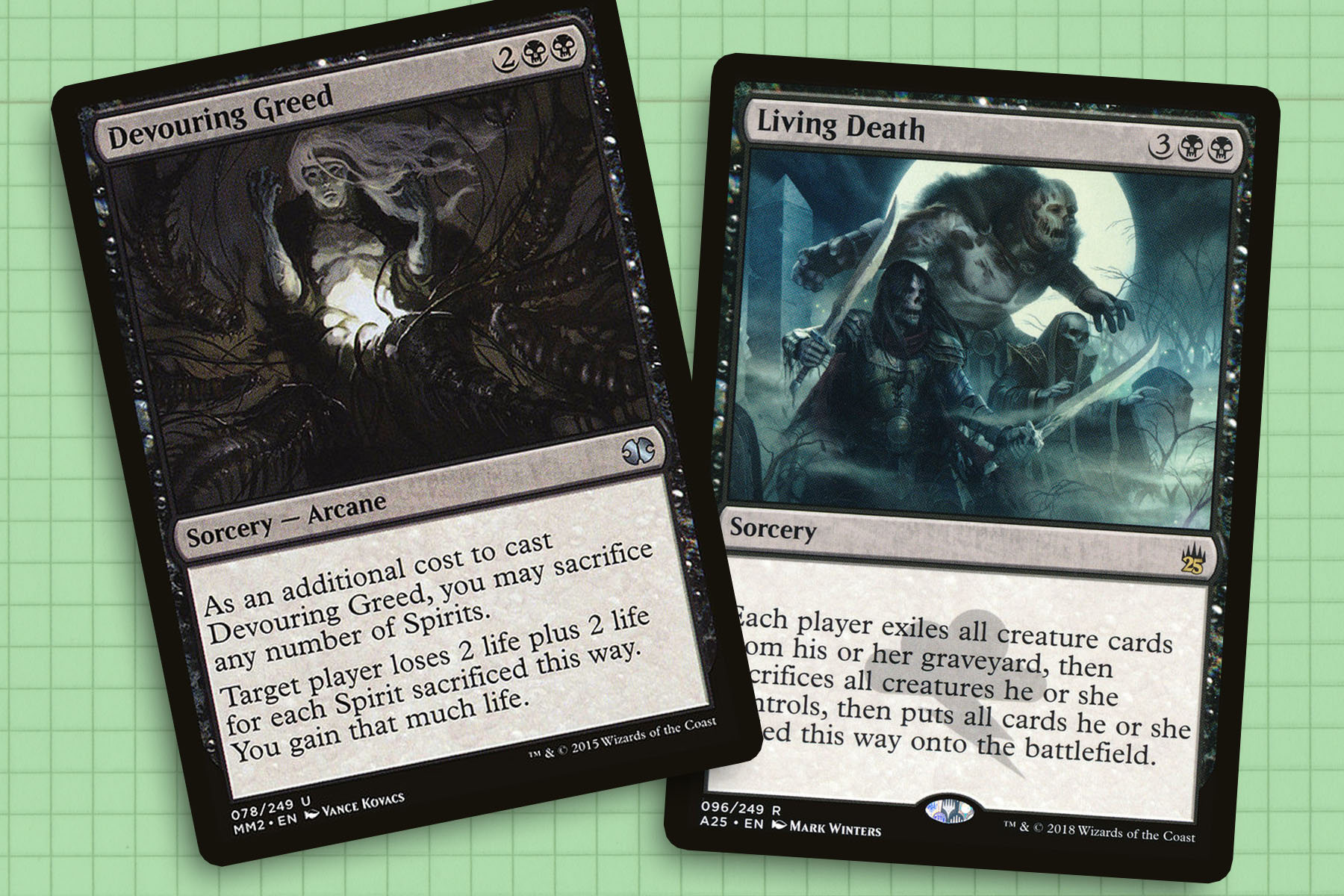One of the spirited debate topics among Magic players I enjoy looking into the most is the discussion on when and where we will see returns to beloved planes. Sometimes the definition of “beloved” can be its own topic of debate. But to me I know where I’d like to go back to and I know that a lot of other players have their own biases for where they would like to see again as well. Erik Linden and I go back and forth on the discussion of returning planes, we both share a passion for planes that feel like home to us and we’ve grown especially attached to. Erik, formerly of Gathering Magic and now just a casual pick for nicest guy you could know, happens to love Lorwyn and I respect that. But I put Kamigawa at the top of my list of planes to return to over his Welsh-inspired plane.
When I take my nostalgia goggles off and look at Kamigawa block, the first thing I noticed is the lack of multicolor support. This was during a time where the dual lands remained tapped if you drew colored mana out of them. This carried over into the spells as well. Other than this week’s general, there were no multicolored legendary creatures. From my own perspective as a writer, this makes writing about the legends of this block a little more difficult.
Within the story, the plane of Kamigawa was threatened as the spirits of essentially everything inexplicably begin to wage war with its living inhabitants. I believe this war makes for interesting factioning that I would like to see explored on a return. Thousands of years later now, it’s possible that the denizens of the plane live in peace with the spirits, which may be another interesting direction to take the tribe. Spirits touch into all the colors, similar to other fictional tribes like Elementals or Dragons, but I don’t see getting the legitimate attention they deserves.
So, before I take on O-Kagachi, Vengeful Kami, I want to dip my toe into spirits by looking at the only multicolored legendary creature of the original Kamigawa block, Iname as One. Coming in at whooping twelve mana, this general should ward off anyone who looks around the table for the most problematic general. Secretly this deck represents a niche game ending graveyard combo deck that relies on Iname, Life Aspect and Iname, Death Aspect hiding within the deck—hopefully making something noteworthy.

Spirited Plans
For the most part I want this deck to be a celebration of the plane of Kamigawa. That means a medium power level that favors the spirit tribe over everything else. Our plan is to find Iname, Death Aspect and fill our graveyard with spirits. From there, cast something akin to Living Death or Twilight’s Call to get all those creatures into play. Conversely, we can also get Iname, Life Aspect in play and die, putting all those spirits into our hand. And from there, we flood the board with creatures.
It’s a lot of work to pull off, requiring shortcuts like Tooth and Nail or Lifespinner to speed up the process. But I’m also okay with not using Life Aspect on a full graveyard, but simply recouping any creatures I have lost along the way. It’s a good thing that Iname, Death Aspect’s trigger works by just entering the battlefield, as getting them out of the graveyard with Reanimate, Animate Dead, or Beacon of Unrest might be one of the easier ways to get the trigger.
Equally important, we should be able to put Iname, Life Aspect into our graveyard with Ashnod’s Altar, High Market, and Phyrexian Altar as just a few of the cheap ways to sacrifice a creature. The plan is honestly convoluted; but since we’re looking to fly under the radar for most of the game, I’m fine with having a plan that only reveals itself once all the pieces fall into place.

Leveling Out Mana Curves
Kamigawa block was from a bygone era of Magic where the creatures were not especially good by the standards set even a few years later, let alone today. As such, a lot of the creatures from the block are high on the curve for unimpressive stats. This makes it especially important to employ methods of cutting down the cost of our creatures spells through cards like Urza’s Incubator, Krosan Drover, and the bottom half of Conduit of Ruin.
Since we are in green, there is of course another way to circumvent the higher mana costs: mana doubling. The classic route is Heartbeat of Spring, which is dangerous because you’re allowing the rest of the table to benefit. Then there are Regal Behemoth, Zendikar Resurgent, and Overlaid Terrain, which are all prone to removal but allow you to have a wealth of mana that you can hopefully benefit from before the rest of the table answers them. Since we’re in black, we have access to Crypt Ghast; as well as Urborg, Tomb of Yawgmoth and Cabal Coffers, which I respect but personally don’t play.

Team Spirit
Since our Plan A is going to be delivering all our spirits to the graveyard with Iname, Death Aspect, we’re looking to have as many spirits in our deck as we can and for them to be as impactful as possible. Because of how important the tribe was to the Kamigawa block, there’s an awful lot of support if you know where to look. Kodama of the Center Tree can be a powerhouse at only five mana. Petalmane Baku, Thief of Hope, and Kodama of the South Tree are good examples of the spirit spells matter sub theme we can implement, allowing our board state to transform dramatically with our increased access to mana. And the aforementioned Lifespinner will allow us to go looking for legendary spirits such as Kokusho, the Evening Star while feeding our graveyard.
I haven’t thought critically about Soulshift in quite some time, but as a young Magic player the inherent card advantage coming from the mechanic intrigued me. The basic idea was that a spirit would have this mechanic on it and upon dying would allow you to get back a spirit that had a casting cost typically lower than the creature you just lost. But then there is Promised Kannushi, a non-spirit card which for one mana and a death trigger can get you just about any Spirit you may be looking for. This dynamic means that when we are not bringing back our entire graveyard a la Twilight’s Call, we can be regrowing any utility spirits that we may have already used up.
Outside of the block, I would recommend any card that allows you to choose a tribe upon entering the battlefield. Cover of Darkness grants evasion, Obelisk of Urd is a double anthem, and Steely Resolve gives them all shroud. We also don’t want to overlook Kin-Tree Invocation, which promises a useful body or the ever-popular Chameleon Colossus which as always is also a spirit. And while not on theme, I would keep Izoni, Thousand-Eyed in mind, because undergrowth should be especially potent in this deck.

Going to the Yard
Our route to victory can come in several different forms, but in my eyes Devouring Greed is the most important way that we will be winning the game. Matched up with Noxious Revival and Reclaim, we may even be able to enough times to safely survive the onslaught of the table while taking multiple players out of the game. In Golgari colors, filling up our graveyard outside of Iname shouldn’t be hard: just cast Damnable Pact or Deadbridge Chant and you should be all set. It’s what you do once you have a full board that opens things up style points while we wait to find our Devouring Greed.
At first I could really think of was using He Who Hungers to strip our opponents’ hands and Perilous Forays to bolster our available mana. Then I realized the Ravnica Allegiance card Priest of Forgotten Gods paired with Thornbite Staff would make for a fine back-up plan, forcing our opponents to not only lose life, but creatures. At that point, maybe we finish off any remaining players with Drain Life or regrow our Damnable Pact from earlier to get the Braingeyser win in black.
I think it’s fair to say that this deck is medium power level and that it won’t get you removed from your local playgroup anytime soon. But my hope is the somebody looks at this and goes, “this is just crazy enough to work and I’d like to try it.” Spirits have a pretty underplayed legacy within the game, they appear on just about every plane and have a showing in every color. Having had experience with the try before I can say that the deck is very good if you are looking to play a recursion type strategy. And hopefully with the addition of Priest of the Forgotten Gods this deck might be something viable. Until next time, thank you.
Ryan Sainio is a Graphic Designer who writes about EDH, the EDH community, and streams on Twitch in his down time. He has been playing Magic: The Gathering since 7th Edition in 2002 and values flavorful and fun gameplay over competitively optimized decks. Join him for a stream at twitch.tv/hipstersainio on Tuesday nights.

